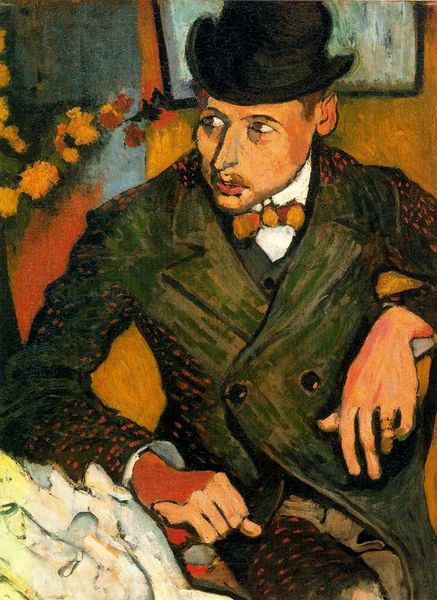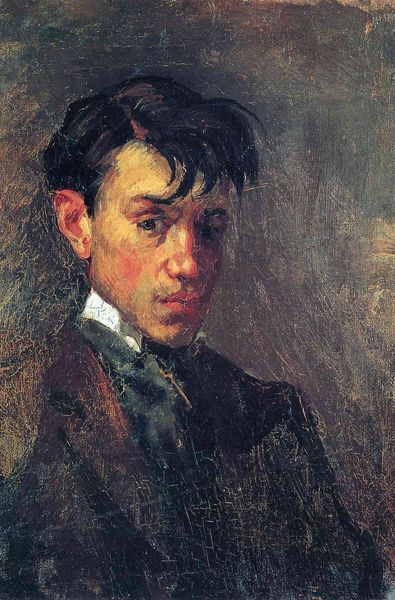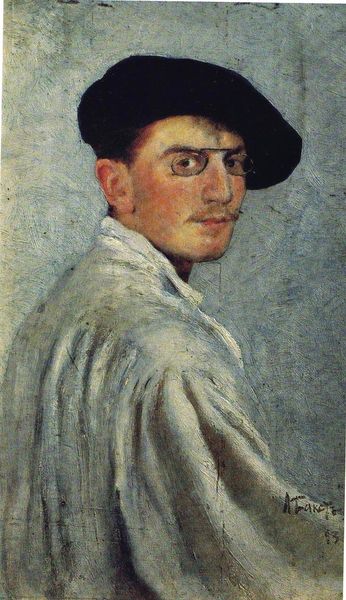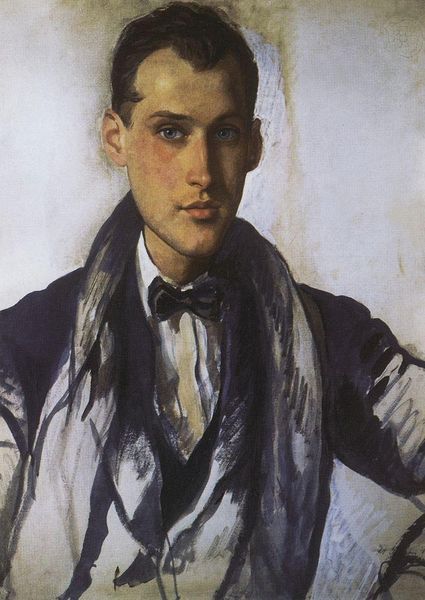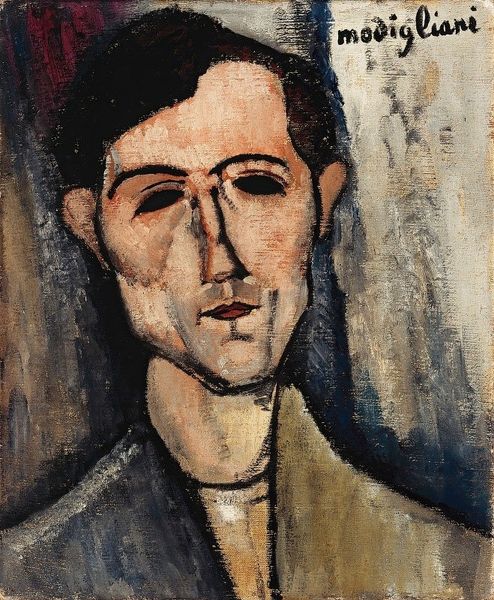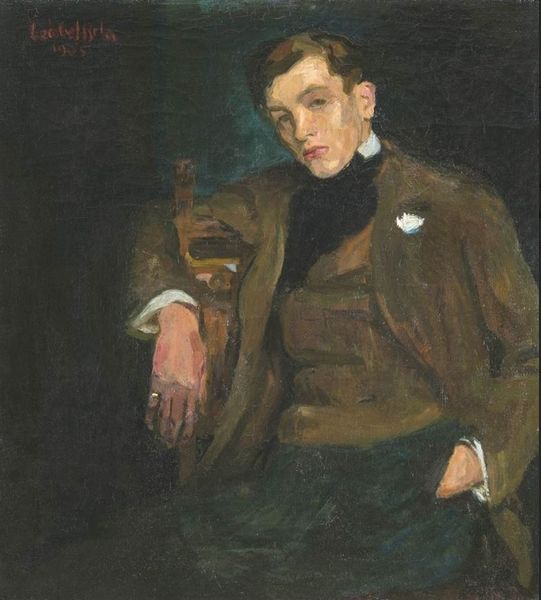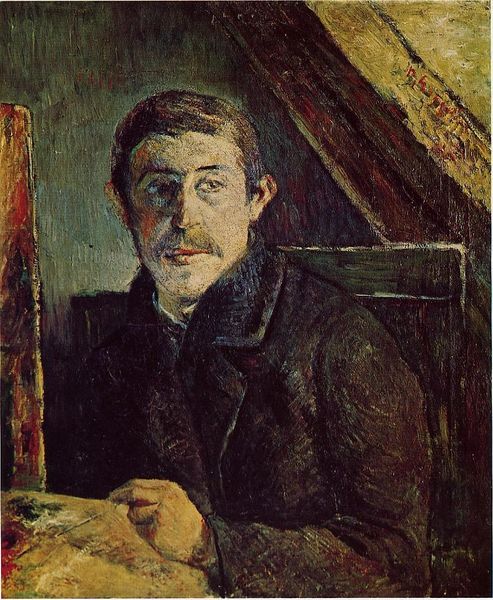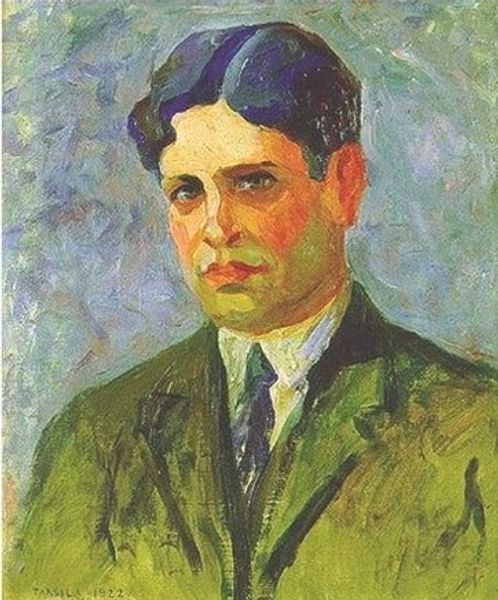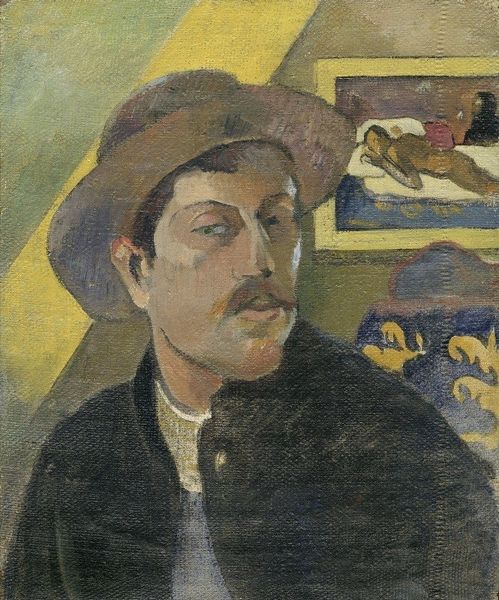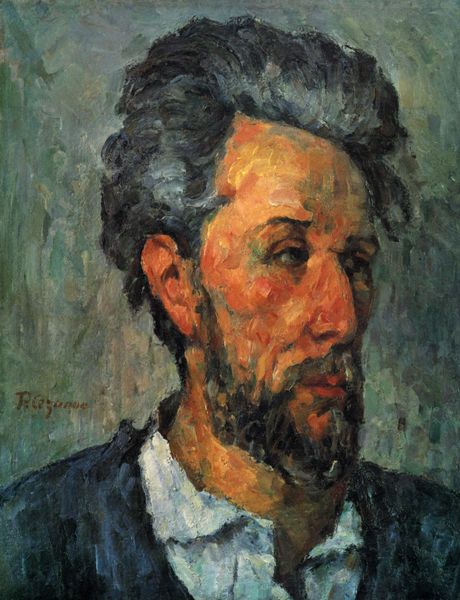
oil-paint
#
portrait
#
self-portrait
#
oil-paint
#
landscape
#
charcoal drawing
#
oil painting
#
famous-people
#
male-portraits
#
underpainting
#
modernism
#
futurism
Dimensions: 70 x 100 cm
Copyright: Public domain
Curator: Boccioni’s “Self-Portrait,” crafted in 1908, greets us. Look at how the city pulsates around him. Editor: My first impression? The urban landscape and its subdued palette create an aura of introspection, of solitude amid a city burgeoning with change. Curator: Indeed, let's consider Boccioni's vantage point. We see a high perspective that allows us to survey not just Boccioni, but the world under construction, quite literally, that surrounded him. It anticipates his later Futurist manifestos that demanded artists engage directly with modernity. Editor: The texture is so vibrant. There’s a staccato rhythm in his brushstrokes that feels restless and uneasy. The way the light plays on the architectural details contrasts beautifully with the soft rendering of his features. Is he hopeful or skeptical of this future world? Curator: The juxtaposition you mention reflects, in my reading, a generational struggle, and one mirrored in Italy’s ambitions as it wrestled with its place in the modern world. We cannot overlook that within the decade Boccioni signed the Futurist Manifesto—the implications of this era extend into current discussions surrounding technological acceleration, national identity, and global power dynamics. Editor: It's such an immediate work. His direct gaze and the dynamic composition pull me right in, implicating me as a viewer within his moment. And the artist presents himself here in what way? Powerful man or overwhelmed spectator? Curator: More profoundly, doesn’t Boccioni implicate himself as the intellectual—the artist—bearing the responsibility of representing this emerging society, even shaping it, to its citizens? Editor: Yes, and from a purely formal perspective, it is masterful the way he's balanced a near monochrome palette with rich textural variations. A great sense of form rises organically out of an artist observing great tumult. It is anything but rote, wouldn't you agree? Curator: Absolutely. Seeing it afresh allows me to appreciate his place in a dialogue that is far from over. Editor: For me too. I depart having considered a question central to painting itself: does beauty endure despite turmoil and dread?
Comments
No comments
Be the first to comment and join the conversation on the ultimate creative platform.

